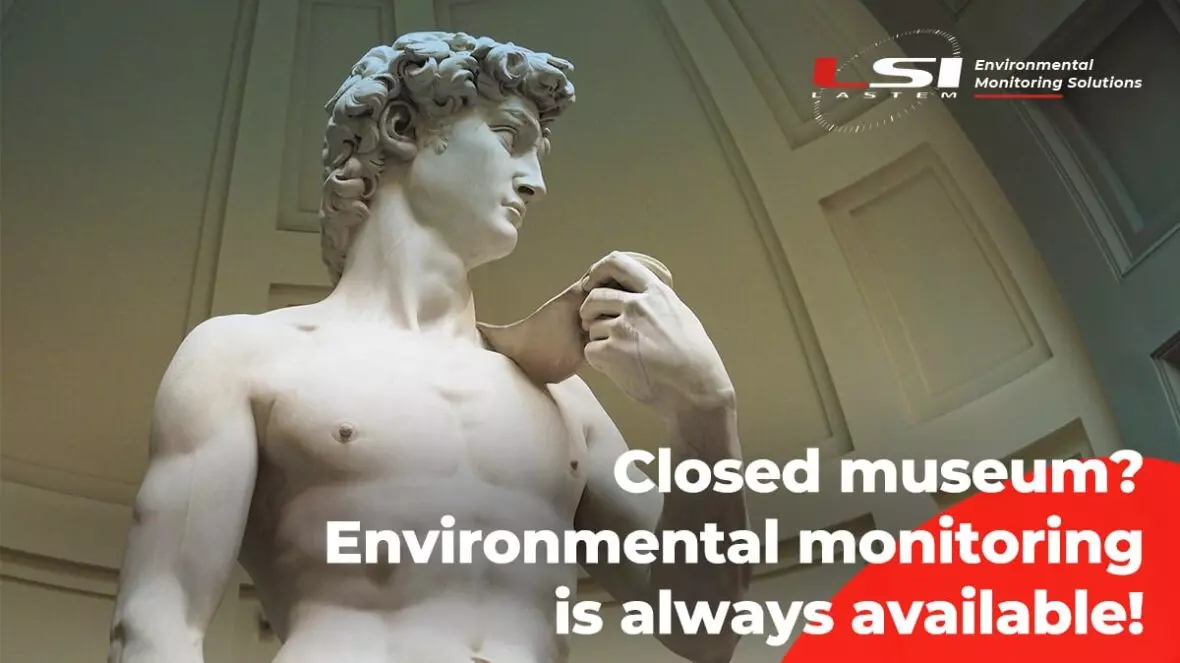Cultural heritage: the importance of environmental monitoring (even when museums are closed!)

Unfortunately, everyone knows that in this period many museums and art galleries are closed to the public. Today, more than ever, it is therefore necessary to pay the utmost attention to preventive conservation. In fact, it is important to ensure the regular execution of those activities that slow down the effects of aging and degradation on cultural heritages.
The close control of the environmental parameters is, from this point of view, fundamental: thanks to LSI LASTEM sensors it is possible to perform it even remotely, using the web services. In fact, from any location connected to the Internet, it is possible to visualize, process and store all the data recorded by the individual sensors installed, inside and outside the building, in real time.
One of the most prestigious museums in Florence has chosen this service in order to guarantee maximum protection of the indoor environmental conditions even when the museum preserver works from remote.
A network of more than 40 monitoring stations, located in the various exhibition halls and inside the individual display boards of the museum, provides temperature and relative humidity data, as well as air quality data, such as CO2 sensors for the evaluation of the well-being of visitors.
All measurements data are available on a dedicated website, protected by login credentials. In this way, the museum staff can promptly intervene in the face of anomalous data or when predetermined thresholds are exceeded.
Furthermore, the processed data can be displayed in the form of graphs even with comparisons among different periods. A useful tool for planning restoration or maintenance activities.
All the data collected, even in this period of absence of the public, can be extremely useful to identify innovative solutions for the improvement of indoor environmental conditions.
